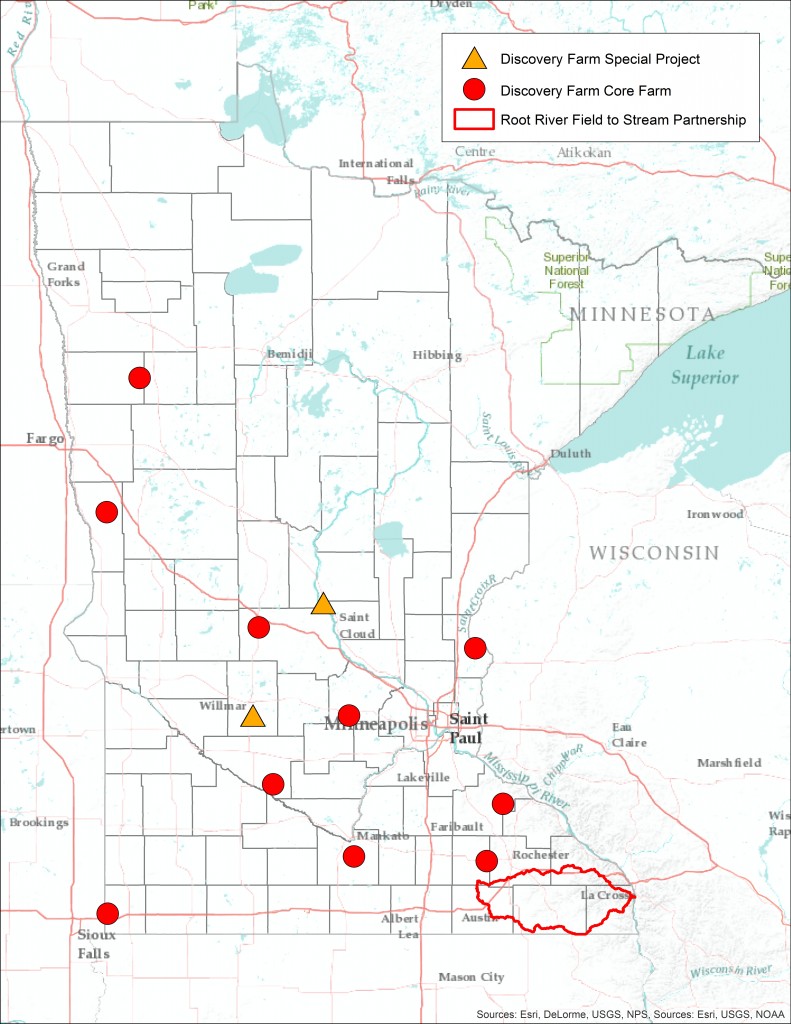Citizens of Minnesota, both urban and rural, are concerned about water quality. Attendance at The Governor’s Water Summit at the end of February is strong evidence for this interest. There are numerous perceptions, but few actual measurements.
There are two major initiatives that are in place to measure water quality at the edge-of-the-field. One of the initiatives is ongoing in southeastern Minnesota. This is known as the Root River Field to Stream Partnership. The other initiative is Discovery Farms Minnesota and this program has monitoring sites throughout the state. These two initiatives are similar in many ways, yet, there are some differences.

The Root River Field to Stream Partnership began in 2009 when a group of diverse organizations came together to form this partnership. The purpose was to evaluate how different agricultural practices affect runoff and the quality of the water in local rivers and streams. The following year, the Discovery Farms Minnesota project was started with a similar purpose. This initiative was organized by a steering committee that consisted of representatives of commodity organizations, various state agencies, and conservation groups.
For the Root River Field to Stream Partnership project, losses are measured at edge-of-field sites at Bridge Creek in Houston County, Crystal Creek in Fillmore County, and the Root River Headwaters in Mower County. There are 1 to 2 cooperating farmers in each county. The edge-of-field measurements complement the monitoring that takes place at the outlets of the three watersheds (Bridge Creek, Crystal Creek, Headwaters). These particular sub-watersheds, covering 10,000 crop acres, were strategically selected because they represent the diversity of farming systems and unique landscapes across the southeast region.
The Root River Field to Stream Partnership initiative includes the collection of field specific management records related to tillage, nutrient and pesticide practices from forty-five farmers to document new and existing conservation practices being utilized. This information is important in helping track the long-term relationships between agricultural practices and water quality at both the field and watershed scale. Extensive research/demonstrations pertaining to nitrogen use are also conducted in the three watersheds. A good example is the on-farm evaluation of rate and time of application of nitrogen fertilizer for corn production and sinkhole dye tracing to define shallow groundwater flow paths to area springs and streams.
For the Discovery Farms Minnesota initiative, ten core farm cooperators from across Minnesota allow edge-of-field measurement of sediment, nitrogen and phosphorus from fields on their farms. These farms are representative of some of the diversity of farm enterprises and landscapes in Minnesota.
There are two special projects in the Discovery Farms Minnesota initiative. One is focused on downward movement of nitrate-nitrogen in an irrigated sandy soil. The other concentrates on a comparison of measurements that might be used to predict the amount of in-season nitrogen needed for a continuous corn enterprise when a fall application of turkey manure is used to supply part of the nitrogen needed for optimum corn yields.
Root River Field to Stream Partnership and Discovery Farms Minnesota are complementary, but have some differences. Both projects utilize edge-of-field monitoring with the same equipment and standardized operating procedures to assure scientifically credible data collection and both add substantial information to our understanding of losses of sediment, nitrogen, and phosphorus from the landscape. The Root River Field to Stream Partnership effort also provides for the measurements at the edge-of-the field combined with measurements at the outlets of small watersheds. The information collected from each adds to our understanding of the impact of crop production practices on the quality of the water leaving the diverse landscapes of Minnesota.
- Value of Soil Organic Matter - March 8, 2017
- Movement of Nutrients from Soil to Plants - September 20, 2016
- Understanding the Basics of Water in Soils - August 14, 2016